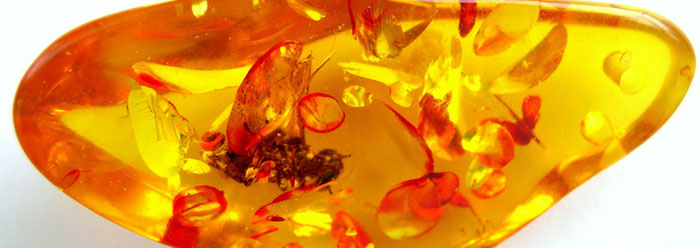Stumptown Brewery in Guerneville, California, brews its beer according to a unique formula. Although standard ingredients such as malt and hops are used, the yeast that is added is supposedly 45 million years old.1 The yeast was found in the digestive tract of a bee encased in amber. How could yeast cells survive and still be able to make beer after such a long time?
The yeast strain was revived by Raul Cano at California Polytechnic State University, who has awakened many other ancient yeast strains and bacteria. While owner of a biotechnology corporation called Ambergene, he oversaw the isolation and characterization of over 1,200 ancient microorganisms from amber, including many recognizable species and strains of bacteria and yeast.2 Time magazine reported in 1995 that not only is DNA recoverable from amber, but Cano “revived the exact ancient organism, totally intact” from the entrapped bee’s gut.3
While this kind of discovery has been considered “miraculous,” “marvelous,”3 and “enigmatic,”4 it actually reveals the exceedingly improbable and unreasonable nature of the age assigned to the ancient materials from which these organisms were extracted. Chemistry and even natural selection conspire to break down living systems, at the biochemical and population levels respectively. So even encased in amber, natural deterioration processes still apply.
Cano even revived some non-spore forming bacteria “from a 120-million-year-old block of amber.”4 DNA, proteins, and tissues like blood vessels that have been found intact in earth materials that are supposedly millions of years old provide enough reasons to question the deep-time evolutionary interpretation of earth’s history.5 Now, an array of still-living organisms trapped inside amber provide strong additional reasons to doubt it.
However, if these amber deposits were a result of Noah’s Flood, then they all date to only 4,350 or so years ago.6 Finding live, revivable yeast after this length of time is much more plausible than the evolutionary assigned age of 45 million years, given the deleterious effects of the laws of chemistry and physics, which only do more damage given more time.
References
- Biba, E. Gallery: The Making of a Prehistoric Brew. Wired Science. Posted on Wired.com July 31, 2009, accessed August 10, 2009.
- Cano, R.J. Bio Sketch from California Polytechnic State University. Posted on calpoly.edu, accessed August 10, 2009.
- Nash, J.M. and D. Bjerklie. Return of the Living Dead? Time. Posted on time.com May 29, 1995, reporting research published in Cano, R. J. and M. K. Borucki. 1995. Revival and identification of bacterial spores in 25- to 40-million-year-old Dominican amber. Science. 268 (5213) 1060-1064.
- Greenblatt, C. L. et al. 2004. Micrococcus luteus - Survival in Amber. Microbial Ecology. 48 (1): 120-127.
- Thomas, B. Dinosaur Soft Tissues: They’re Real! ICR News. Posted on icr.org August 11, 2009.
- Thomas, B. Fossilized Gecko Fits Creation Model. ICR News. Posted on icr.org September 8, 2008.
* Mr. Thomas is Science Writer at the Institute for Creation Research.
Article posted on August 17, 2009.













